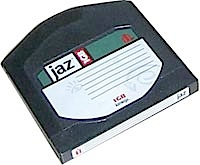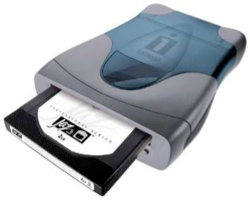Why Magnetic?
Magnetic storage media and devices store data in the form of tiny magnetised dots. These dots are created, read and erased using magnetic fields created by very tiny electromagnets.
In the case of magnetic tape the dots are arranged along the length of a long plastic strip which has been coated with a magnetisable layer (audio and video tapes use a similar technology).
In the case of magnetic discs (e.g. floppy disc or hard-drive), the dots are arranged in circles on the surface of a plastic, metal or glass disc that has a magnetisable coating.
In the case of magnetic tape the dots are arranged along the length of a long plastic strip which has been coated with a magnetisable layer (audio and video tapes use a similar technology).
In the case of magnetic discs (e.g. floppy disc or hard-drive), the dots are arranged in circles on the surface of a plastic, metal or glass disc that has a magnetisable coating.
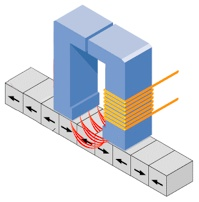
Hard Drives
Hard-drives have a very large storage capacity (up to 1TB). They can be used to store vast amounts of data. Hard-drives are random access devices and can be used to store all types of films, including huge files such as movies. Data access speeds are very fast.
Data is stored inside a hard-drive on rotating metal or glass discs (called ‘platters’).
Data is stored inside a hard-drive on rotating metal or glass discs (called ‘platters’).
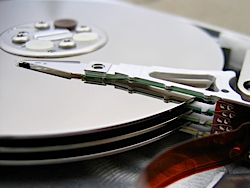
Fixed Hard Drive
A hard-drive built into the case of a computer is known as ‘fixed’. Almost every computer has a fixed hard-drive.
Fixed hard-drives act as the main backing storage device for almost all computers since they provide almost instant access to files (random access and high access speeds).
Fixed hard-drives act as the main backing storage device for almost all computers since they provide almost instant access to files (random access and high access speeds).
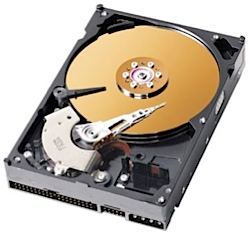
Portable Hard Drive
A portable hard-drive is one that is placed into a small case along with some electronics that allow the hard-drive to be accessed using a USB or similar connection.
Portable hard-drives allow very large amounts of data to be transported from computer to computer.
Portable hard-drives allow very large amounts of data to be transported from computer to computer.
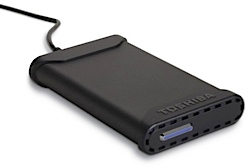
Many portable music players (such as the iPod classic) contain tiny hard-drives. These miniature devices are just not much bigger than a stamp, but can still store over 100MB of data!
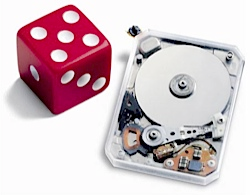
Magnetic Tape
Magnetic tape is a large capacity, serial access medium. Because it is a serial access medium, accessing individual files on a tape is slow.
Tapes are used where large amounts of data need to be stored, but where quick access to individual files is not required. A typical use is for data back-up (lots of data, but rarely only accessed in an emergency)
Tapes are also used and in some batch-processing applications (e.g. to hold the list of data that will be processed).
Tapes are used where large amounts of data need to be stored, but where quick access to individual files is not required. A typical use is for data back-up (lots of data, but rarely only accessed in an emergency)
Tapes are also used and in some batch-processing applications (e.g. to hold the list of data that will be processed).
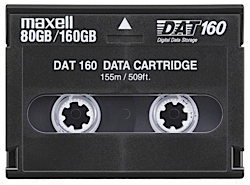
Removeable Media Magnetic Discs
Floppy Disc
A removable, portable, cheap, low-capacity (1.44MB) storage medium. Floppy discs are random access devices used for transfer small amounts of data between computers, or to back-up small files, etc. Access times are slow.
Almost every PC used to have a floppy disc drive. These are obsolete now, having been replaced by higher capacity technology such as CD-ROMs, DVDs and USB memory sticks.
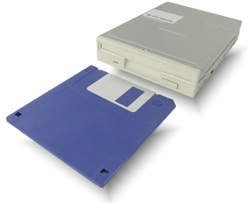
Zip Disc
A removable and portable storage medium, similar in appearance to a floppy disk, but with a much higher capacity (100MB, 250MB or 750MB).
Zip discs are random access devices which were used for data back-up or moving large files between computers.
Zip discs are random access devices which were used for data back-up or moving large files between computers.
Another obsolete storage device, zip discs were a popular replacement for floppy discs for a few years, but they never caught on fully before being superseded by cheaper media like CD-ROMs and CD-Rs
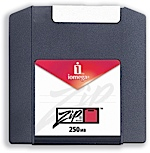
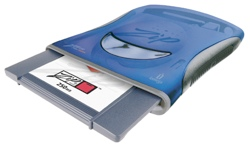
Jaz Disc
A removable and portable storage medium based on hard-drive technology, with a large capacity (1GB or 2GB).
Jaz discs are random access devices which were used for data back-up or moving large files between computers.
Jaz discs are random access devices which were used for data back-up or moving large files between computers.
Discs were expensive to buy and not very reliable.
Like the Zip disc, this system never really caught on and was superseded by far cheaper and more reliable and cheaper technology.
Like the Zip disc, this system never really caught on and was superseded by far cheaper and more reliable and cheaper technology.
